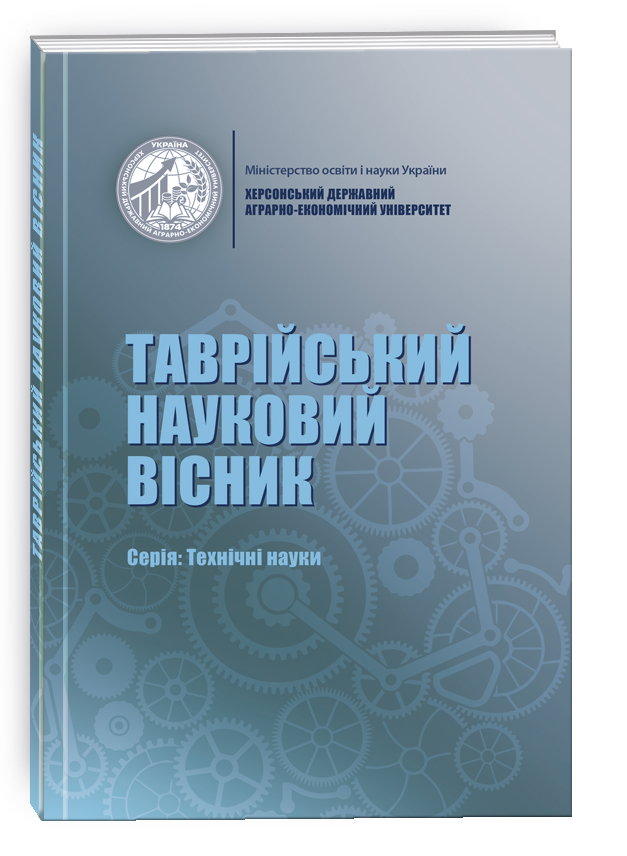REGARDING THE FORMATION OF A DATA SET BASED ON A NEURAL NETWORK IN THE FIELD OF THE INTERNET OF THINGS
DOI:
https://doi.org/10.32851/tnv-tech.2021.4.2Keywords:
data array, artificial intelligence, neural network, Internet of Things, sensor, intelligent systemAbstract
The article investigates the principles of data formation on the basis of a neural network in the field of the Internet of Things. It is noted that the Internet of Things generates a huge amount of unstructured data, and big data analytics is a key aspect. The concept of the Internet of Things is of particular value to business development due to the data that can be obtained from the connected elements. There are two theorems that help to reveal the principle of knowledge exchange, which can be taken from the human-computer interaction. It is emphasized that the assignment of a business entity’s name should include words in human language and not abbreviations, codes or binaries that can only be interpreted by machines, although the latter are more technically efficient in terms of storage space or bandwidth network. The principles of the theory of verificationism are revealed and the ways of adapting the structure of the data set are described. The structure of machine knowledge is schematically offered, which is presented in relation to the formation of a data set based on a neural network in the field of the Internet of Things. The described structure has three knowledge bases: hypothesis, ontology and parameters. It is emphasized that the proposed intelligent database can be applied to various areas of the Internet of Things for autonomous exchange and accumulation of knowledge, and the platform, in turn, can use ontologies to integrate IoT devices with intelligent systems. The advantages and disadvantages of the model are described, so it is stated that the advantage of this model is that the sensors of the Internet of Things in the cloud can learn from remote sensors in the background, regardless of the network delay connected to the remote program, can become a bottleneck when the need for real-time decision-making grows. It is emphasized that the implementation of the described algorithm for forming an array of data, as well as the corresponding intelligent environment, will reduce the threshold for developers to enter the field of problem solving using a neural network.
References
Семеног А.Ю. Цифрові технології в умовах формування цифрової економіки. Наукові записки Національного університету «Острозька академія». Серія «Економіка». Острог : Вид-во НаУОА, 2020. № 19(47). С. 20–28.
Сотник І.М., Завражний К.Ю. Підходи до забезпечення інформаційної безпеки промислового Інтернету речей на підприємстві. Маркетинг і менеджмент інновацій. 2017. № 3. С. 177–186. DOI: 10.21272/mmi.2017.3-17.
Аксак Н.Г. Методи та моделі розподіленої інтелектуальної обробки великих даних у спеціалізованих комп’ютерних системах : автореф. дис. … д-ра техн. наук : 05.13.05 «Комп’ютерні системи та компоненти». М-во освіти і науки України, Харків. нац. ун-т радіоелектроніки. Харків, 2019. 44 с.
Проривні технології в економіці і бізнесі (досвід ЄС та практика України у світлі ІІІ, ІV і V промислових революцій) : навчальний посібник / за ред. Л.Г. Мельника та Б.Л. Ковальова. Суми : Сумський державний університет, 2020. 180 с.
Balakleiets K., Kvitka A. Європейські тренди в інноваційному підприємництві. URL: 2019. https://www.researchgate.net/publication/333609483_Evropejski_trendi_v_innovacijnomu_pidpriemnictvi (дата звернення: 10.01.2021).
Zhang W., Kumar M., Liu J. Multi-parameter online measurement IoT system based on BP neural network algorithm. Neural Computing and Applications. 2019. Vol. 31. No. 12. P. 8147–8155. DOI: 10.1007/s00521-018-3856-8.
Cui Dan, Liu Fei. The Application of BP Neural Network in Internet of Things. Advanced Engineering Forum. 2012. Vol. 6–7. P. 1098–1102. DOI: 10.4028/www.scientific.net/AEF.6-7.1098.
Xiao Han, Li, Yuanjiang. A New Thought based on the Service Composition of Automatic Transmission Semantic Grid in Internet of Things. International Journal of Advancements in Computing Technology. 2011. Vol. 3. P. 10–16. DOI: 10.4156/ijact.vol3.issue7.2.
Changsheng X., ZiYing Z. A New Music Classification Method based on BP Neural Network. JDCTA. 2011. Vol. 5. No. 6. P. 85–94.
Han Xiao, Yuanjiang Li. A New Thought based on the Service Composition of Automatic Transmission Semantic Grid in Internet of Things. IJACT. 2011. Vol. 3, No. 7. P. 10–16.
Ren Fang, Ma Jian-Feng. Attribute-Based Access Control Mechanism for Perceptive Layer of the Internet of Things. JDCTA. 2011. Vol. 5. No. 10. P. 396–403.
Naveen Dr, Raina Rohini. Machine learning in Internet of Thing. 2018. URL: https://www.researchgate.net/publication/322209934_MACHINE_LEARNING_IN_INTERNET_OF_THING (дата звернення: 06.01.2021).
Li Хinwu. A New Color Correction Model for based on BP Neural Network. AISS. 2011.Vol. 3. No. 5. P. 72–78.
Штучний інтелект зможе попереджати хвороби корів. 2018. URL: http://milkua.info/uk/post/stucnij-intelekt-zmoze-poperedzati-hvorobi-koriv (дата звернення : 06.08.2021).
Олійник П.Б. Розробка бездротового датчика вібрації на основі MEMS акселерометра. URL: https://media.neliti.com/media/publications/306711-developmentof-wireless-vibration-transd-e11dbf9c.pdf (дата звернення: 06.08.2021).
Мокін В.Б., Собко Б.Ю., Дратований М.В., Крижановський Є.М., & Горячев Г.В. Створення інформаційної системи моніторингу забруднення атмосферного повітря міста на основі технології «Інтернет речей». Вісник Вінницького політехнічного інституту, 2017. № 3, с. 49–58.
Методологія та організація наукових досліджень : навчальний посібник / І.С. Добронравова, О.В. Руденко, Л.І. Сидоренко та ін. ; за ред. І.С. Добронравової (ч. 1), О.В. Руденко (ч. 2). Київ. : ВПЦ «Київський університет», 2018. 607 с.







